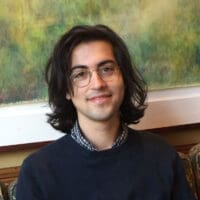Whereas many studies have explored the impact of meditative training on the ability to sustain a narrow attentional focus, few have investigated the impact of such training on the ability to expand the window of attention. The present study will investigate the influence of long-term open-monitoring (OM) practice on visual attention. In line with contemplative accounts suggesting that OM practice broadens the spotlight of attention, we predict that long-term practitioners (LTPs) of OM, compared to non-meditators (NMs), will employ a more efficient, pre-attentive-like, cognitive strategy during visual search (i.e., letting the target “pop” into mind rather than actively looking for it). We hypothesize that such effortless cognitive styles will lead to faster reaction time and improved accuracy on a classic visual search task. In addition to behavioral measures, we will use eye-tracking technology, event-related potentials (EEG/ERP), and phenomenological interviews to illuminate differences in attention between LTPs and NMs. We predict that LTPs will employ different search strategies than NMs. We expect LTPs to rely on convert parallel processing rather than overt serial scanning, indexed in their gaze behavior by longer fixation durations and fewer saccades. Accordingly, we hypothesize that LTPs will draw on different neural resources associated with executive processing during visual search. Our findings will likely corroborate and expand on the tangible cognitive benefits of contemplative practice.

Michael Lifshitz, PhD
Stanford University
Grantee
I am interested in the plasticity of human consciousness. My research investigates practices that aim to transform subjective experience—from meditation and hypnosis to placebos, prayer, and contemplative therapies. I work … MORE

